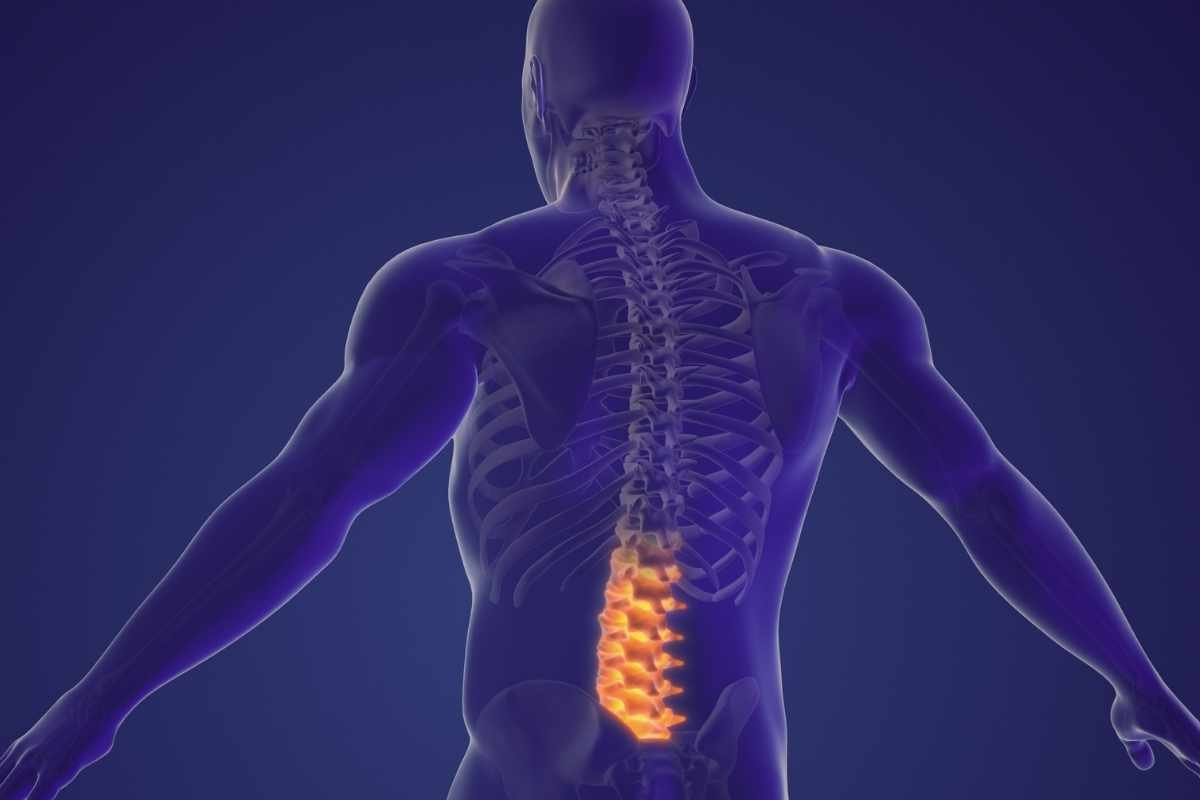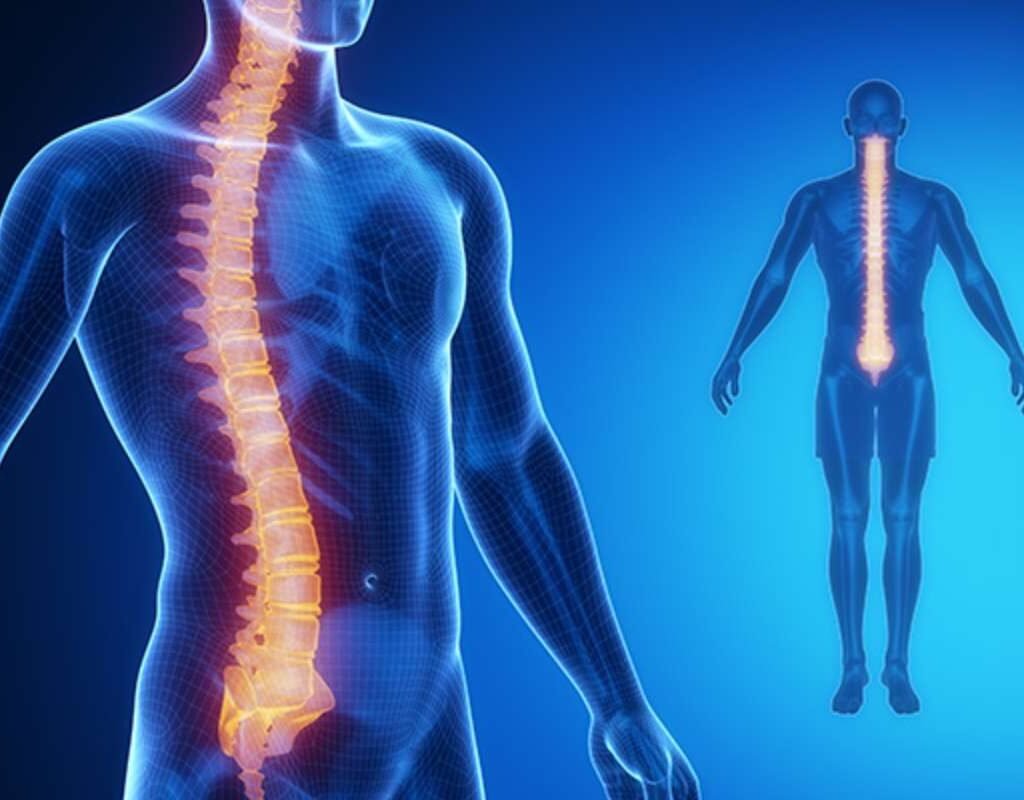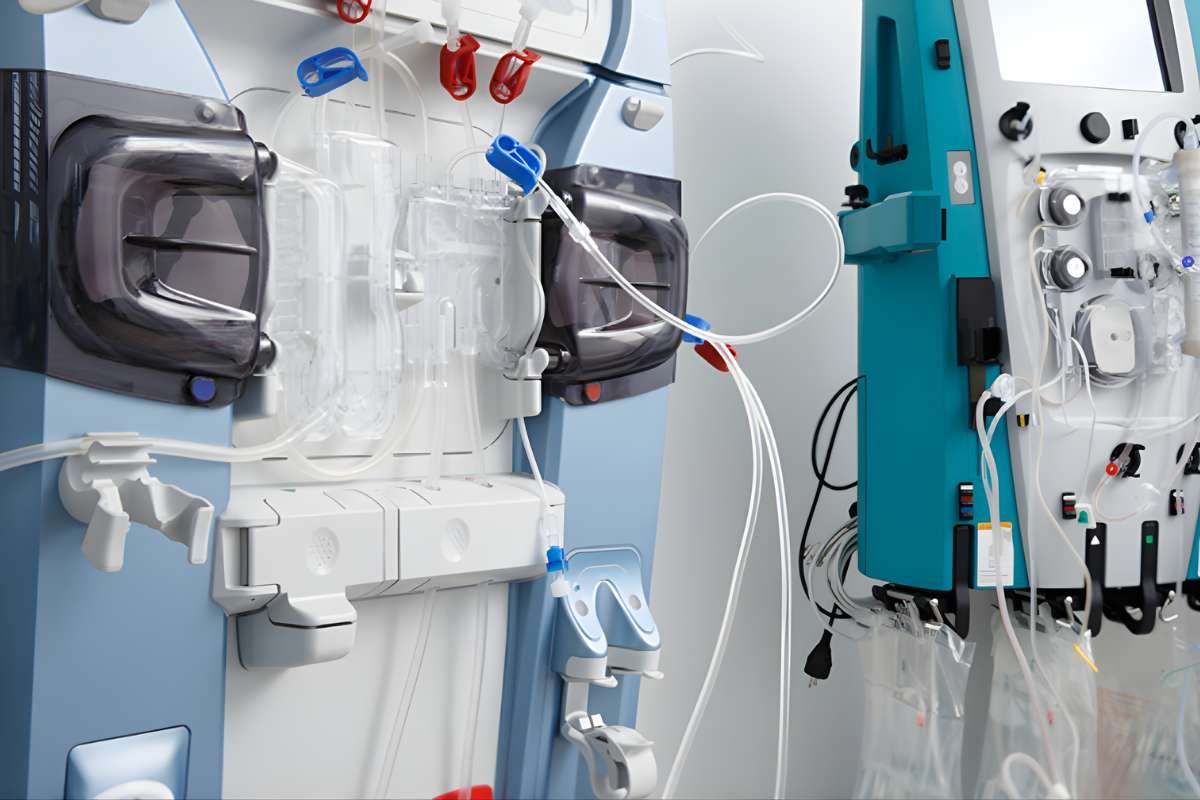Before rushing and finding out about the symptoms of spinal cord compression, let us understand what spinal cord compression is. Spinal cord compression is a medical condition caused by certain conditions that put pressure on the spinal cord. The spinal cord is the bundle of nerves that carries messages between the brain and the body’s muscles and tissues. This whole area is protected by vertebrae that create the spine.
Spinal cord compression can occur anywhere along the spine, from the neck to the lower back. Compression can develop within minutes, hours, days, weeks, months, or years. If you don’t treat the same within time, the compression can lead to a serious condition called myelopathy. This is a neurological impairment. Quick diagnosis and treatment are required to prevent damage to the spinal cord.
In this blog, you will get valuable information about symptoms of spinal cord compression, its causes, diagnosis, and treatment.
Table of Contents
Symptoms of spinal cord compression
If you recognize any of the below-mentioned symptoms, you should visit a doctor. The symptoms can develop quickly or slowly, depending on the cause.
1. Acute or Long term Symptoms
- Severe or increasing numbness between the legs, inner thighs, and back of the legs
- Severe pain and weakness that spreads into one or both legs. This can make it difficult for you to walk or get out of a chair.
- No control over the bladder or bowel movements
2. Long-term Symptoms

- Pain and stiffness in the neck, back, or lower back
- Burning pain that can spread in the arms, buttocks, or down into the legs
- Loss of taste, smell, touch and sound
- Numbness, cramping, or weakness in the arms, hands, or legs
3. Loss of sensation in the feet
- No proper leg or hand coordination
- Weakness in foot
4. Other possible symptoms
- Loss of sexual ability
- Pressure on nerves in the lower back can also cause cauda equina syndrome
The mentioned symptoms of spinal cord compression depend upon the severity of the impairment you are going through. In later stages, the acute or long-term compression can lead to segmental deficits, paralysis, loss of reflexes, and bowel/bladder dysfunction. Also, long-term compression may start and lead to lower back pain to severe neurological issues.
Causes of Spinal Cord Compression
What triggers the symptoms of spinal cord compression? If you are looking for the answer, check out the below points.
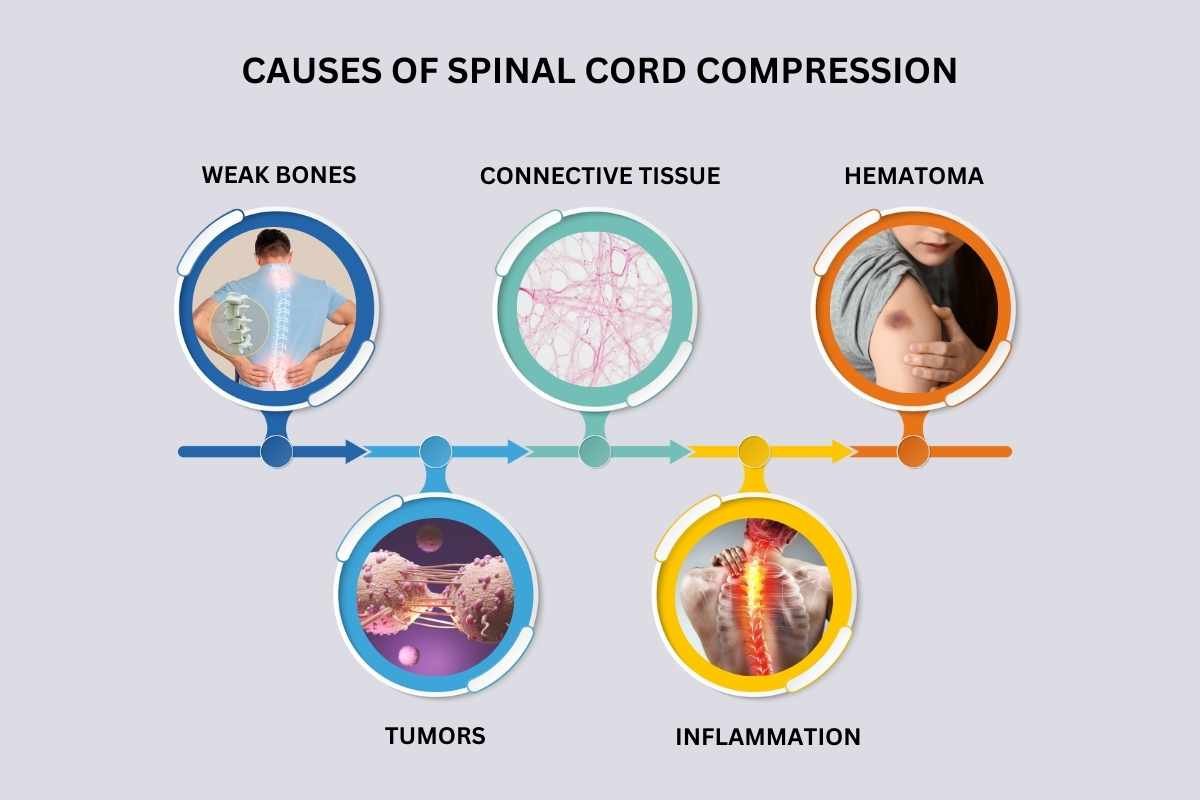
1. Weak Bones
- Fractured, dislocated, or differently grown vertebrae
- Weakened vertebrae due to cancer or osteoporosis
2. Connective Tissue
Hardening of the connective tissue and lining the spinal cord and narrowing of the spinal cord
3. Hematoma
Collection of blood in or around the spinal cord can lead to spine injury, vascular malformations, tumors, or bleeding disorders.
4. Tumors
- If cancer spreads to the spine or around the spinal cord, this impairment can be caused.
- In rare cases, an individual having a tumor in the spinal cord can lead to spinal cord compression.
5. Inflammation
If there is puss formation outside the spine, then it can head towards spine compression.
Whom it can affect the most?
The ones suffering from advanced cancer are at a higher rate of risk for developing spinal cord compression.
Diagnosing Spinal Cord Compression
As you have understood the causes and symptoms of spinal cord compression, this section will guide you about the diagnosis for the same.
- Clinical Examination: A health professional will do your check-up and tell you about the symptoms like weakness, numbness, and abnormal reflexes.
- X-rays: They are useful for detecting bone dislocation or spinal misalignment.
- MRI/CT Scans: Scanning provides healthcare professionals with detailed images of the spinal cord around the problematic area.
- Myelogram: Here, a dye is used with CT to identify the blockages.
- EMG: This machine checks the electrical activity in the muscles
- Biopsy: In this technique, samples of tissues are collected if any masses are detected.
Treatment of Spinal Cord Compression
Treatment of spinal cord compression focuses on relieving pressure and preventing permanent damage. Here are some of the treatment options
1. Immediate Interventions
- Steroids: High-dose IV dexamethasone is given to the patient to reduce swelling and inflammation. This is followed by oral dosage to prevent symptoms of spinal cord compression.
- Emergency Surgery: Once the spinal cord issue is diagnosed, immediate surgery is done for acute compression or for reducing the neurological issues in the spine area.
2. Surgical Options
- If you are having spinal instability, abscesses, hematomas, or recurring tumors are present, you can opt for surgery.
- Before going out for surgery, a biopsy is done for diagnosis by the healthcare professional.
- Other procedures, such as removing bone outgrowths, widening spinal spaces, and stabilizing the spine through vertebrae, are done in a worst-case scenario.
3. Radiation Therapy
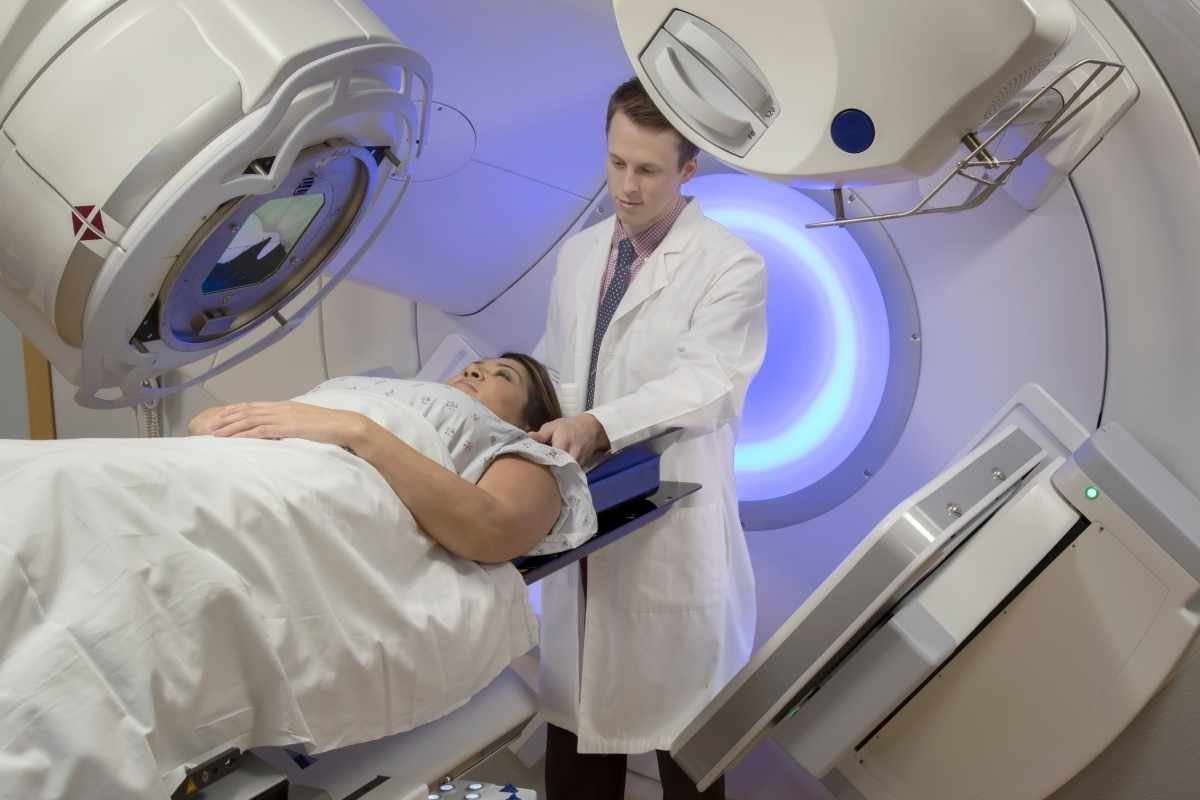
It is used to shrink tumors that cause this compression. This therapy is used for cancer patients.
4. Medications
Some medicines, such as NSAIDs and Bisphosphonates, help to reduce inflammation and strengthen bones in specific areas. Another alternative for this medicine is chemotherapy or hormonal therapy for compressing the spine.
5. Alternative Therapies
Treatments like acupuncture or chiropractic care may provide some relief to your compressed spine.
Diagnosis and quick treatments are necessary to improve the outcomes and keep your functioning well.
“NanoHive is addressing the challenges of spinal fusion with bioactive 3D printed titanium interbody devices.”
“NanoHive’s Soft Titanium® technology reduces implant stiffness, making it comparable to PEEK, while providing similar load-bearing strength as bone.”
“NanoHive Medical is committed to selling its products with Distributor organizations that have an established reputation for excellence in hospital and surgeon service and support throughout the U.S.”
Summary:
We hope the information we have provided you for the spinal cord compression will help you to take quick action and prevent the impairment. During this difficult situation, you should take care of your spine and follow the instructions given by the healthcare professional. Ignoring the symptoms can damage your spinal cord and can affect your daily chores.
As we all know, at the end of the day everything is related to our spinal cord.

